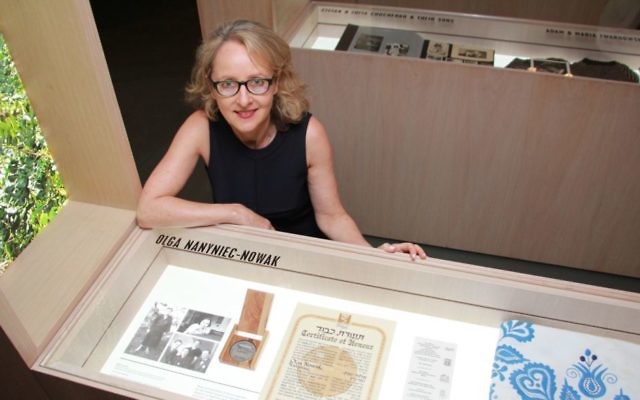Honouring the Righteous who saved our families
Descendants of Righteous Among the Nations members – and Australian Jews saved by them – attended the SJM launch of the I Am My Brother’s Keeper exhibition.

DIRECT descendants of six featured Righteous Among the Nations members – and Australian Jews whose families were saved by them – were present at the emotional launch of the Sydney Jewish Museum’s (SJM) new exhibition I Am My Brother’s Keeper on December 6.
Museum curator Roslyn Sugarman said what makes this exhibition particularly powerful is it was developed by Yad Vashem, tailored especially for an Australian audience, and enhanced with relevant documents and artefacts from the SJM’s own collection.
Sugarman said the life stories of the selected six Righteous members hit very close to home, and are a poignant reminder of how the actions of one invididual can make all the difference in the face of organised violence.
“For example, this exhibition specifically recognises 38 Australian families who survived because of Japanese diplomat Chiune-Sempo Sugihara’s actions, against his superiors’ orders, to issue hand-written transit visas to more than 3,500 Jews in Lithuania in 1940,” Sugarman said.
“What I find incredible is that he would work more than 16 hours a day to do this – he was still handwriting visas while in a train on his way out of Lithuania.”
Another featured Righteous member is Olga Nanyniec-Nowak, who worked as a clerk in Boryslaw town hall when the Nazis occupied the small Polish city and, at great personal risk, concealed the Wizers – a Jewish family of four – in a cellar below her flat, in 1940.
Olga, aged only 21 at the time, also sheltered Leszek Nadler, his sister and mother – and at least four other Jews – in a range of locations including her own flat and her parents’ farm.
Remarkably, Olga married Leszek after the war and after a short period in Jerusalem, the couple relocated to Sydney.
Olga and Leszek’s niece Marika Biber – who campaigned to have Olga recognised as a Righteous in 2003 – attended the exhibition launch and told the The AJN: “What Olga did was extraordinary, but that was her nature”.
“My aunt was the sort of person who, if she saw wrong being done to someone, it didn’t matter what colour or religion they were, she would go and try to help them,” Biber said.
“And like all heroes, she was humble, modest and unassuming.
“Can you imagine having soldiers in your house that were looking around, checking and asking why a cellar door was covered with logs?
“Olga calmly answered them – that it was just firewood stockpiled for the winter – but I think I would have just fainted.”
Biber said: “This exhibition is like an embodiment of recognition that is grounded and solid, with that direct connection to Yad Vashem, so I feel it’s an opportunity for Olga’s legacy to live on.
“I feel this exhibition really underlines that we all need to strive to help others.”
Other featured Righteous, with Australian connections, include Frederik and Hermine Korten, Stefan and Zafia Chucherko and their sons, Adam and Maria Twardowski, Raoul Wallenberg and Adrianus and Bertha van As.
The exhibition will run until the end of June 2017.
SHANE DESIATNIK

comments